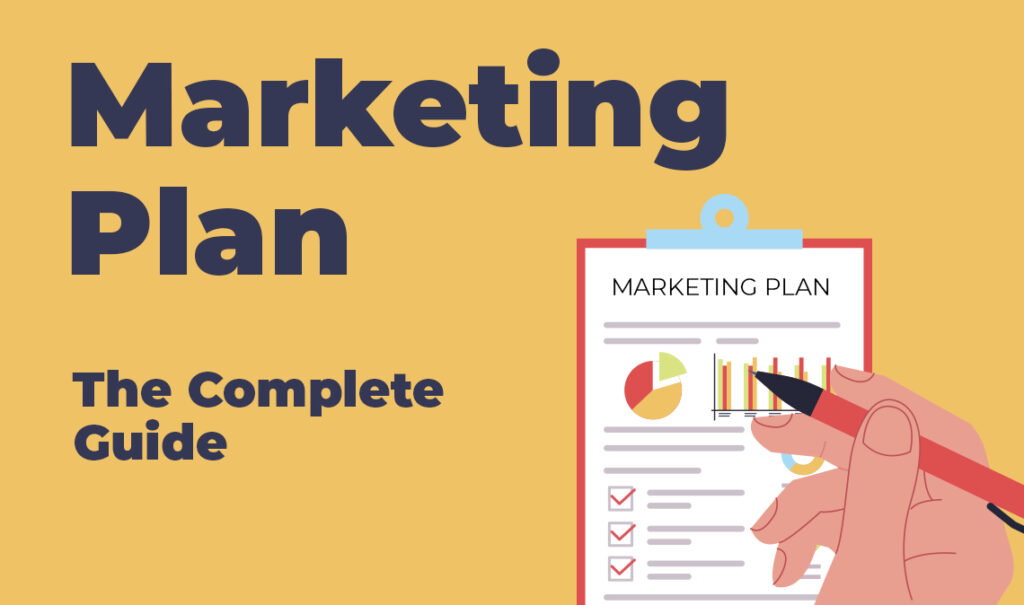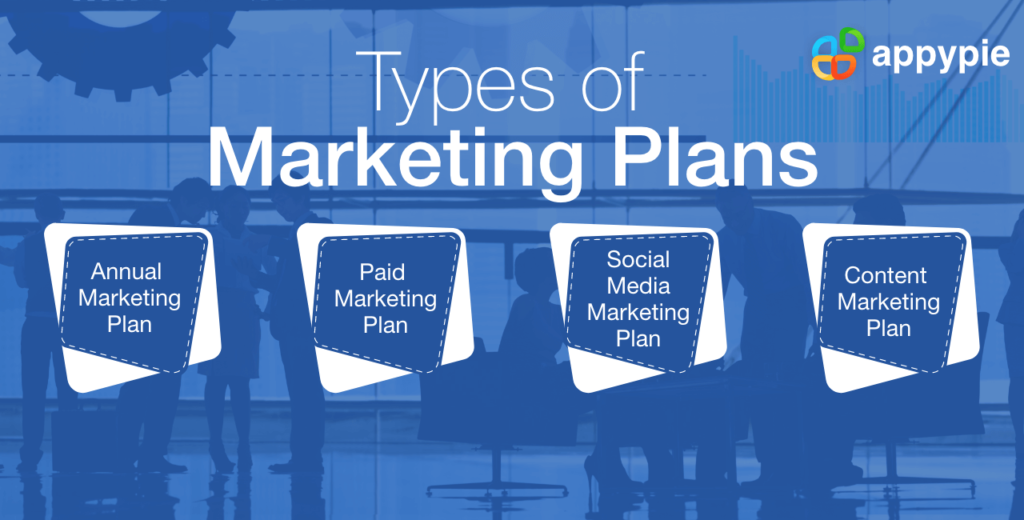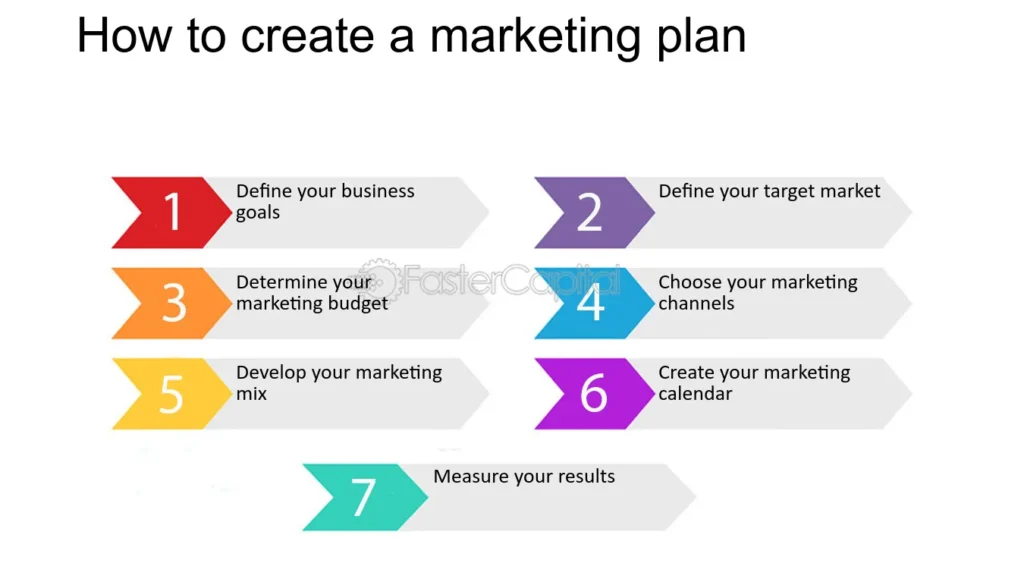How to create a marketing plan in 2024

A marketing plan is like a job description for your company. Everyone should have one, but they’re often not fit for purpose, out of date, and reviewed infrequently. Every business needs a solid marketing plan to highlight its marketing objectives, estimate the cost, and keep track of the strategic goals it sets.
Research has shown that businesses with plans succeed, outperform competitors, and retain staff, more than those with no plan. Without any plan there’s no direction for the company or its employees. And decisions can be uninformed, opportunities can be missed and threats can damage or destroy the business.
What is Marketing Plan?

A marketing plan is a comprehensive document that outlines an organization’s marketing strategy, tactics, and activities to achieve its business objectives. It is a roadmap for the marketing team, guiding them in reaching the target audience, promoting products or services, and ultimately driving sales and revenue.
It should be customer-centered, and it is focused on your target audience and the value propositions you will deliver to them.
Types Of Marketing Plans

There are many types of marketing plans, and each tailored to different objectives, audiences, and timelines. Here are some common types:
1) Comprehensive Marketing Plan:
This is a detailed plan that covers all aspects of marketing for an organization or product. It includes market analysis, target market segmentation, marketing strategies, tactics, budgeting, implementation, and evaluation.
2) Annual Marketing Plan:
A year-long plan that outlines marketing strategies and tactics for the entire fiscal year. It includes quarterly or monthly targets, budget allocation, and a timeline for a various marketing activities. These plans let you see everything at a glance, from the company mission and unique selling points (USPs) to your SWOT analysis and marketing channels
3) Social Media Marketing Plan:
Specifically targets social media platforms to build brand awareness, engage with customers, drive website traffic, and generate leads or sales. This can contains specific social media tactics, campaigns you plan to run, and ways to establish your presence on other social media platforms. It includes strategies for content creation, community management, advertising, and social media metrics. And it is a good marketing plan.
4) Content Marketing Plan:
It concentrates on creating and distributing valuable, relevant, and consistent content to attract and retain a defined audience. It outlines content creation, distribution channels, editorial calendars, and metrics for measuring content effectiveness. It’s type sheds light on the different tactics, strategies, and campaigns you can use to help your business reach its goals content-wise. It can also feature an editorial calendar for your team to use. one contains specific social media tactics,
5) Product Launch Marketing Plan:
Product Launch is specifically designed for introducing a new product or service to the market. It focuses on generating awareness, building anticipation, and driving initial sales for the new offering. Launching a new product requires planning. This is a roadmap for your strategies to promote your new product.
6) Paid marketing plan:
Marketing Plan VS Marketing Strategy

Marketing Strategy
1) A marketing strategy is a high-level, long-term plan or approach it is designed to achieve the organization’s overall marketing goals.
2) It Contains high-level elements like products, niche, competitors, brand, guidelines, etc.
3) It typically cover a longer timeframe, often spanning multiple years.
4) Examples include focusing on product differentiation, targeting a specific niche market, implementing a pricing strategy (such as premium pricing or penetration pricing), expanding into new markets, or developing strategic partnerships.
Marketing Plan
1) A marketing plan is a detailed operational document that outlines specific actions, tactics, and initiatives to be implemented in the short to medium term.
2) It provides a roadmap for executing the marketing strategies to achieve specific marketing objectives within a defined timeframe.
3) It typically cover a shorter timeframe, often spanning one year or less.
4) Examples included in a marketing plan are setting specific marketing objectives, identifying target audience segments, selecting marketing channels, allocating budgets, creating content calendars, and outlining metrics for measuring success.
How to create a Marketing Plan?

There’s no way of creating a marketing plan, but there are some key components that should go inside a winning one. Follow these steps below to create an effective marketing plan.
1) Start with an executive summary:
The executive summary usually goes at the beginning of your marketing plan. It’s basically a short summary or brief overview of your company and the key takeaways from the entire plan. Our marketing plan outlines a comprehensive strategy to drive growth and maximize brand impact for [Company Name] in the [Year].
As the landscape of [industry/sector] continues to evolve, our focus remains on delivering exceptional value to our customers while achieving our business objectives.
2) Define your target audience:
For a marketing plan specific to a product, service, or brand, defining the target audience is essential. Here’s how you might define the target audience:
Demographics
1) Age: Identify the age range of your target audience, such as 25-40 years old.
2) Gender: Determine if your product/service appeals to a specific gender or is gender-neutral.
3) Income: Consider the income level of your target audience, whether they are high earners, middle-income, or budget-conscious consumers.
4) Education: Determine the educational background of your target audience, such as high school graduates, college-educated professionals, or postgraduate students.
5) Occupation: Identify the types of occupations or industries your target audience works in, such as healthcare, technology, finance, or retail.
Psychographics
1) Lifestyle: Understand the lifestyle preferences, values, interests, and hobbies of your target audience, such as health-conscious, environmentally-friendly, or adventure-seeking individuals.
2) Personality: Consider personality traits that may influence purchasing decisions, such as extroverted, introverted, risk-averse, or adventurous.
3) Values: Identify the core values and beliefs of your target audience, such as sustainability, social responsibility, or innovation.
4) Attitudes: Determine the attitudes and opinions your target audience holds toward your product/service, competitors, and industry trends.
Behavioral Factors
1) Buying Behavior: Analyze the purchasing behavior of your target audience, including frequency of purchases, brand loyalty, and decision-making process.
2) Usage Patterns: Understand how your target audience uses similar products/services, including frequency of use, specific features they value, and pain points they encounter.
3) Media Consumption: Identify the preferred communication channels and media platforms your target audience uses to gather information, such as social media, websites, blogs, print publications, or podcasts.
Geographic Location
1) Location: Determine the geographic location of your target audience, such as city, state, region, or country.
2) Urban/Rural: Consider whether your target audience resides in urban, suburban, or rural areas, as this may impact their lifestyle, preferences, and purchasing behavior.
3) Climate: Take into account climate-related factors that may influence consumer behavior, such as weather conditions, seasonal trends, and regional preferences.
Write SMART goals:
SMART goals are specific, measurable, attainable, relevant, and time-bound. This means that all your goals should be specific and include a time frame for which you want to complete them.
Specific: Increase website traffic
Measurable: By 30%
Achievable: By implementing SEO improvements, content marketing strategies, and social media campaigns
Relevant: To increase brand visibility and generate leads
Time-bound: Within the next six months
So, the SMART goal would be “Increase website traffic by 30% within the next six months through the implementation of SEO improvements, content marketing strategies, and social media campaigns to increase brand visibility and generate leads.”
Set your budget:
Before you can begin implementing any of the ideas that you’ve come up with in the steps above, you have to know your budget.
For example, your tactics might include social media advertising. However, if you don’t have the budget for that, then you might not be able to achieve your goals.
While you’re writing out your tactics, be sure to note an estimated budget. You can include the time it’ll take to complete each tactic in addition to the assets you might need to purchase, such as ad space.
Setting a budget for your marketing plan requires careful consideration of your objectives, resources, priorities, and constraints to ensure that you’re investing your resources wisely and effectively driving business growth.
FAQ's

Q. What are the 7 elements of a marketing plan?
A comprehensive marketing plan should include 7 elements:
- Budget
- Initiative
- Target Market
- Marketing Channel
- A Business Summary
- Marketing Technology
Q. How do you write a marketing plan?
To create a plan, you need to follow a few simple steps. These include:
- Stating your business’s mission and values
- Crafting an executive summary
- Establishing your KPIs
- Outlining your buyer personas
- Identifying your competition
- Describing your market strategy and initiatives
- Clearly defining your plan’s omissions
- Setting your marketing budget
- Outlining your plan’s contributors and their responsibilities
Q. What are the P’s of a marketing plan?
The 6 P’s of marketing, i.e., product, pricing, promotion, people, process, and place (distribution). You can use the 6 Ps to create your market strategy.
1) Product: This P focuses on the actual product or service being offered to the market.
2) Pricing: Pricing strategy plays a critical role in determining the perceived value of your product or service and influencing purchasing decisions.
3) Promotion: Promotion encompasses all the activities aimed at promoting and communicating the value of your product or service to the target market.
4) People: People refers to the personnel involved in delivering the product or service and interacting with customers.
5) Process: Process refers to the procedures, systems, and workflows involved in delivering the product or service to customers.
6) Place: Place refers to the distribution channels through which the product or service is made available to custome
Q. How do I develop a budget for my marketing plan?
Determine the resources needed for each marketing activity and allocate budgets accordingly, considering factors such as advertising costs, personnel expenses, and promotional materials.
Q. Where can I find templates or examples of marketing plans?
There are various online resources, books, and software tools available that offer templates, guides, and examples of marketing plans to help you get started.
Q. What Is a Marketing Plan Template?
A marketing plan template is a customizable document with placeholder content that can help you get started quickly. Creating a marketing plan from scratch takes too much time. Using a template not only sets up you for faster designing but it also inspires creativity.
Internal communications inspire delight in coworkers, making it more enjoyable to check off lists and follow processes. Marketing plans on plain white documents just get lost in email threads.
Q. What Makes a Good Marketing Plan?
For a marketing plan to be good, it doesn’t take much. But for a marketing plan to be great, make sure you check off this checklist:
- Develop targeting and positioning assessments for the strategy and give clear guidance in the marketing plan as to how the messaging will be targeted in marketing copy.
- Share clear promotional tactics per channel, touchpoint or activity. Explain how to repurpose marketing content with intent and tailor promotions to their destination.
- Include a scope assessment and a simple scope management plan for the marketing strategies in the marketing plan.
- Keep the marketing plan document alive by updating and referencing it during the strategy’s lifecycle. Be ready for pivots and changes in the scope.



